FUNDING CUTS IMPACT CT HUMANITIES: Help CT Humanities navigate recent funding cuts and continue our vital work across Connecticut. All donations made to CTH will be matched dollar-for-dollar up to $50,000. Donate today!
News & Updates

Bridgeport’s Walt Kelly, Creator of Pogo
Bridgeport resident Walt Kelly was the creator of Pogo, a wildly popular comic strip during the middle of the 20th century.
Read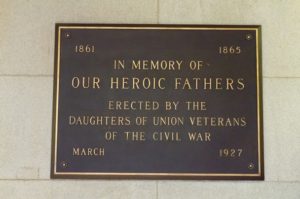
The Gettysburg Address and Heroic Fathers Bronze Tablets at the State Capitol
In 1927, two different women’s organizations dedicated plaques to commemorate events and service in the Civil War.
Read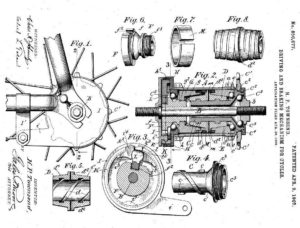
The Coaster Brake – Today in History: April 9
On April 9, 1907, Harry Pond Townsend patented the driving and braking mechanism for cycles, the first device to combine driving, braking, and coasting.
Read
The Innumerable Accolades Afforded Dr. William H. Welch
Trained at Yale, William Welch was a native of Norfolk, Connecticut, and one of the most celebrated physicians of his time.
Read
War and the Fear of Enemy Aliens – Who Knew?
…that Greenwich had a special police unit trained to handle suspected foreign agents operating in Connecticut.
Read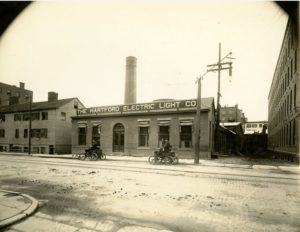
Let There Be Light: An Early History of the Hartford Electric Light Company
As cities switched from gas lamps to electric lighting, one observer noted that Hartford was “far in the lead of any other city in the world in the use of electricity for light and power per capita.”
Read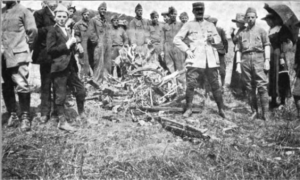
World War I Flying Ace Raoul Lufbery
Although his time as a Connecticut resident was short, this aviator left his mark on Wallingford and a generation fighter pilots.
Read
Freighter Worcester Launched – Today in History: April 5
On April 5, 1919, the freighter Worcester was launched in Groton in support of the war effort for the Emergency Fleet Corporation of the US Shipping Board.
Read
Amateur Radio Comes of Age in Connecticut
In April 1914, inventor, scientist, and amateur radio operator Hiram Percy Maxim encouraged the Radio Club of Hartford to organize amateurs into a self-reliant network.
Read
Forgotten Founder: John Davenport of New Haven
John Davenport, the founder of New Haven, was a prominent Puritan leader during the early years of the New England colonies.
Read
Hartford’s Fuller Brush Company Goes Door-to-Door Across US
Founded in 1906 by Alfred C. Fuller, the Fuller Brush Company was one of Connecticut’s most notable corporations.
Read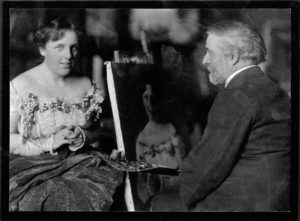
Theodate Pope Riddle: Connecticut’s Pioneering Woman Architect
Despite opposition from a male-dominated profession and a lack of formal training, Theodate Pope Riddle became a pioneering female architect.
Read
A Candy Bar Empire in Naugatuck
Almond Joy and Mounds were two of the most popular candy bars sold by Naugatuck’s Peter Paul Manufacturing Company, an enterprise begun by Armenian immigrant Peter Halajian.
Read
William Redfield Born – Today in History: March 26
On March 26, 1789, William C. Redfield, the noted American meteorologist, was born in Middletown.
Read
Triangle Shirtwaist Fire: Connecticut Lessons from a Tragedy
While the Triangle Shirtwaist fire in New York City is one of the most famous tragedies behind the organized labor movement, Connecticut had its share of equally dangerous work environments in the early 20th century.
Read
Connecticut’s First Municipal Electric Utility
The first municipal electric plant in Connecticut began operating in the City of South Norwalk in 1892 to provide low-cost electricity.
Read
Spring Training Baseball Comes to Wallingford
During World War II, travel restrictions limited the distance baseball teams traveled to begin their training; the National League’s Boston Braves trained in Wallingford.
Read
Leatherman Dies – Today in History: March 20
On March 20, 1889, the Old Leatherman, so called for the clothing that he fashioned for himself, is thought to have died.
Read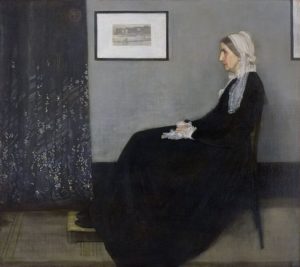
James Abbott McNeill Whistler: A Young Artist in Pomfret
As one of the most well-known American realist painters of the late 19th century, James Abbott McNeill Whistler has intrigued art history enthusiasts for over a century.
Read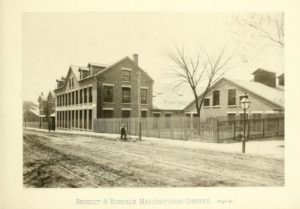
Early 19th-Century Immigration in Connecticut
Numerous factors contributed to the growth of Connecticut in the decades following American independence.
Read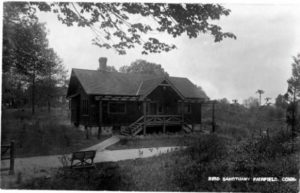
A Woman Ahead of Her Time: Mabel Osgood Wright
This writer and photographer founded the Connecticut Audubon Society and created Fairfield’s Birdcraft Sanctuary.
Read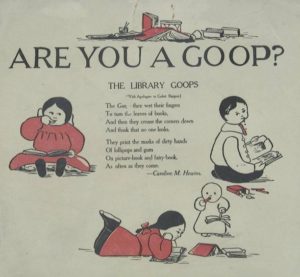
The Public Library Movement: Caroline Hewins Makes Room for Young Readers
This Hartford librarian played a leading role in national efforts to transform libraries into public centers that welcomed patrons from all walks of life.
Read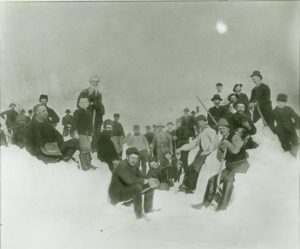
Blizzard of ’88 Shuts Greenwich Off from Outside World
When the storm ended in March 1888, Greenwich received more than 50 inches of snow with drifts of 20 to 30 feet during a blizzard.
Read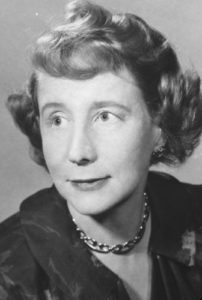
The First Hospice – Who Knew?
Founded by Florence Wald, a former dean of Yale University School of Nursing, Connecticut Hospice opened in March of 1974.
Read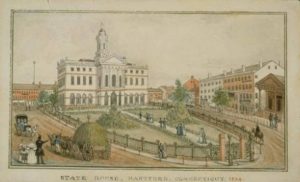
Where It All Happened: Connecticut’s Old State House
Connecticut’s Old State House is a memorial to many of the legislative advances made in Connecticut during the most formative years of the United States.
Read
A Day for Women – Today in History: March 8
Women’s fight for the right to vote in the Constitution State may be dated to 1869, when the Connecticut Woman Suffrage Association (CWSA) was organized.
Read
Gideon Welles Appointed Lincoln’s Secretary of the Navy – Today in History: March 7
On March 7, 1861 Gideon Welles was officially appointed into Abraham Lincoln’s cabinet as Secretary of the Navy.
Read
A Civil War Soldier Engineers an Iconic Career
Horatio Wright commanded troops in Civil War battles fought all over the country, from Virginia to Florida, and out West as far as Ohio.
Read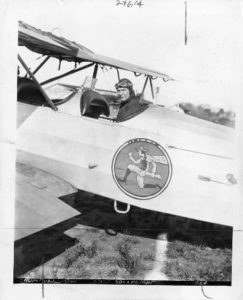
John H. Trumbull: Connecticut’s “Flying Governor”
In 1926, at the age of 53, Connecticut governor John H. Trumbull received his pilot’s license. Piloting flights to his own appointments, he became known as “The Flying Governor.”
Read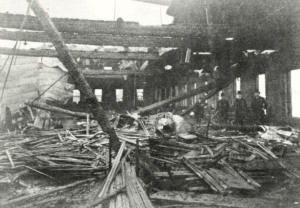
Today in History – Fales & Gray Explosion Underscores Need for a Hartford Hospital
At 2 pm on March 2, 1854, the power of steam incorrectly managed and harnessed wreaked havoc at the railroad-car factory Fales & Gray Car Works in Hartford.
Read
Olin Library and The Debate About Open Space at Wesleyan University
The history of Wesleyan’s library system includes a debate that reveals how values associated with the environment in the early 1900s helped shape the campus’s development.
Read
Rex Brasher Dies – Today in History: February 29
On February 29, 1960, noted wildlife illustrator Rex Brasher died.
Read
Andover Lake: A Lesson in Social Change
While residents of Andover and other nearby towns enjoy the property’s 159 acres, Andover Lake played in challenging racial boundaries during the Civil Rights Era.
Read
Bridgeport: The First Borough
Bridgeport, by a special act of the state’s General Assembly in October 1800, became the first borough created in Connecticut.
Read
The Revolving Gun – Today in History: February 25
On February 25, 1836, Samuel Colt received a patent for a “revolving gun” US patent number 138, later known as 9430X.
Read
Abraham Ribicoff dies – Today in History: February 22
On February 22, 1998, the first Jewish governor in Connecticut’s history, Abraham Ribicoff, died.
Read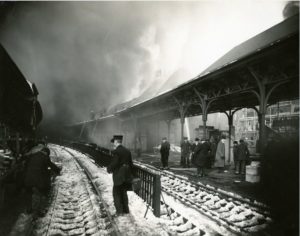
Fire and Ice: A Very Bad Week in 1914
Hartford’s Union Station and Allyn Hall caught fire on two different days in February. Only one still stands today.
Read
A Good Spot and a Healthy Place: A Short History of Charles Island
Before becoming a part of Silver Sands State Park, Milford’s Charles Island served as everything from a luxury resort to the home of a fertilizer factory.
Read
Park Central Hotel Boiler Explosion – Today in History: February 18
In the pre-dawn hours of February 18, 1889, the Park Central Hotel in Hartford was ripped apart by a steam boiler explosion.
Read
A Successful Lawyer and Politician Who Never Went to College
Chauncey Fitch Cleveland was a lawyer and politician who served the state of Connecticut and the nation, despite never pursuing a college education.
Read
Josiah Willard Gibbs’s Impact on Modern Science
New Haven’s Josiah Willard Gibbs laid the groundwork for the development of physical chemistry as a science.
Read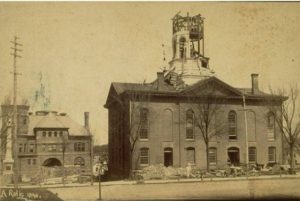
Meriden Town Hall Burns Down – Today in History: February 14
On February 14, 1904, Meriden’s town hall burned to the ground due to a fire that lasted eight hours.
Read
Constitution Plaza Then and Now
Hartford’s first major redevelopment project, Constitution Plaza was built as part of the urban renewal initiatives in the 1950s and ’60s.
Read
The Interstate Highway System Comes to Hartford
The building of I-84 and I-91 may have increased interstate transportation, but city planners and special interest groups continue to grapple with the legacy of these projects.
Read
Arthur Miller dies – Today in History: February 10
On February 10, 2005, the award-winning American playwright Arthur Asher Miller died at his home in Roxbury, Connecticut, of congestive heart failure.
Read
Charles Stratton and Lavinia Warren Wed – Today in History: February 10
He was rich, handsome and famous, she was considered a great beauty and their wedding was front page news around the nation.
Read
Changing Sentiments on Slavery in Colonial Hebron
Residents of Hebron rescued local enslaved people Lowis and Cesar Peters, and their children, from South Carolina slave traders.
Read
North and South: The Legacy of Eli Whitney
After studying to become a lawyer, Eli Whitney actually helped further American industrial production methods through his numerous clever inventions.
Read
Colt Armory Burns – Today in History: February 4
On February 4, 1864, most of Colt’s East Armory, located in Hartford, burned to the ground.
Read
A 1947 Movie Details the Unsolved Murder of a Bridgeport Priest
An unusual murder of a Bridgeport, Connecticut, priest in 1924 inspired the movie, Boomerang!, which debuted at the Cannes Film Festival in 1947.
ReadMore Articles




